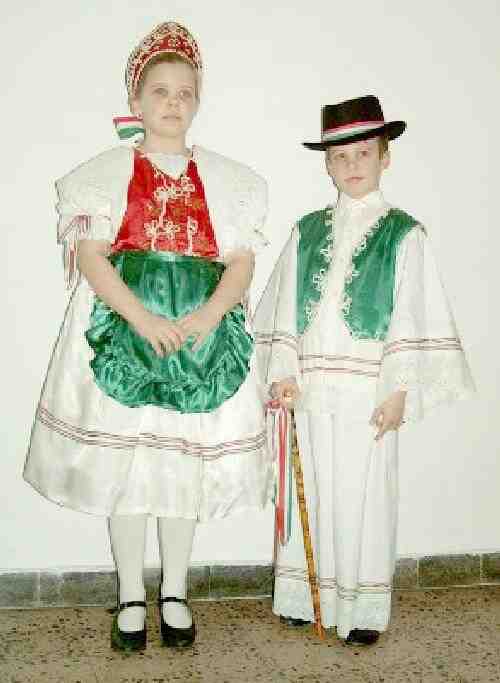
Figure 1.--These Hungarian folk outfits were labeled Magyar népviseletek: Dunaszekcsõ. The children are from the Gyermeksvábbál school. |

|
Hungary until after World War II was a largely agrarian country. We believe folk styles were still widely worn in the country side, especially before World War I. Hungary until 1918 was governened by Austrians. There was a constitutional change in 1867 when a dual monarch was established for the Empire. I'm not sure at this timre how this affected folk fashion. We have, however, few real details. We do note that there was not one Hungarian national folk costume. Rather there was a wide variety of folk costumes from the different regions of Hungary.. We have very limited information on the different styles, but have begun to collect some information. There are not only different Hungarian folk costumes, but costumes of ethnic minorities within Hungary. Hopefully our Hungarian readers will provide us more information here.
These Hungarian folk outfits were labeled Magyar népviseletek: Dunaszekcsõ. The children are from the Gyermeksvábbál school. This seems to be a German school, which had its students dres up in folk costumes.
Mezokoveso isa small town in northeastern Hungary. The area has been inhabited since the Great Migration. Historians believe that it is likely that the first Hungarian settlement was formed here shortly after the conquest of Hungary. It is likely that the village was subsequently destroyed during the Mongol invasion. The town was occupied by the Turks (1544). The Castle of Eger was under siege by the Turks (1552). Mezőkövesd was completely destroyed agin. Though it was rebuilt, after the battle in the nearby village of Mezőkeresztes, it was destroyed again (1596). It wasn't rebuilt for almost 100 years. Mezőkövesd was aroyal estate (intil 1784). In that year the town freed itself from its feudal obligations and the town began to porosper. The railway line reached the town (1860). We see historic tradition being observed into the 20th century. A photograph shows mothers formalizing a marriage contract (1934). The brightly costumes marriage couple is with them looking away.
Here we see farmer children in Mikepércs, near Debrecen during the 1910s. They are wearing characteristic hats. This seems to have been a popular style in Hungary. We also notice some of the boys wearing skirts. We are not sure how common that was in Hungary. It may have been more common in rural than urban areas.
Prussta is an arid, almost treeless steppe-like plain in eastern Hungary. We have found a German postcard labeled "Kinder of Pussta. It was part of a series. We think that meant a series on European children, not a series on Pussta itself. Strangely there are Yiddish characters on the card. We are not sure why this was as we do not see any distinvtively Jewish aspects to the way the children are dressed.
Navigate the Boys' Historical Clothing Web Site:
[Return to the Main ethnic page]
[About Us]
[Introduction]
[Activities]
[Biographies]
[Chronology]
[Clothing styles]
[Countries]
[Girls]
[Theatricals]
[Topics]
[Bibliographies]
[Contributions]
[FAQs]
[Glossaries]
[Images]
[Links]
[Registration]
[Tools]
[Boys' Clothing Home]
Navigate the Boys' Historical Clothing Hungarian pages:
[Return to the Main Hungarian country page]
[Hungarian choirs]
[Hungarian movies]
[Hungarain royals]
[Hungarian schools]
[Hungarian military schools]
[Hungarian youth groups]
